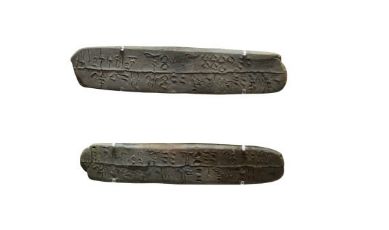The art of Minoan pottery
This drinking cup is a clay vessel made by a potter. Pottery is often, if not always, the most common find on archaeological sites, in particular because of the durable nature of fired clay objects (see the link below to the palm-leaf tablet). These vessels tell us a lot about the civilization’s developments and its economic, religious and social conditions, especially in the absence of translatable written records. This certainly applies to Minoan pottery, which is found on Crete, but also throughout the eastern Mediterranean world.
Characteristic for Minoan pottery is the high standard in decoration and production, and the large variety, ranging from human-sized vases to smaller drinking cups like this one. These changing decoration styles and production methods help to gain an understanding of the chronology of the Minoan period. The Early Minoan period (EM), for instance, is characterized by linear decorations, while polychrome designs were introduced in the Middle Minoan period (MM) and the floral and marine style in the Late Minoan period (LM). Since the second half of the Middle Minoan period, in which Linear A became prominent, there are also single Linear A signs or complete sentences found on objects as decoration. [Betancourt 1985 & Hallager 2017, 405-414] As this clay cup shows, a linguistic inscription is often not combined with other embellishments.
This cup shows another characteristic development in Minoan pottery: the use of a potter’s wheel. Halfway through the Middle Minoan period (ca. 1900 BCE) the potter’s wheel was introduced on Crete, a technique that was already used by the ancient Egyptians. Whereas at first all Minoan vessels were handmade, there is a development towards half handmade and half wheel-made pottery to full wheel-made pottery. [Jeffra 2013, 31-49] A rotating wheel was used to shape a lump of clay or slip and to thin the rim of the vessel to the desired shape. Vessels were then fired to make the material hard and durable.
Related things to this object

](https://micrio.thingsthattalk.net/YqaVk/views/max/171x128.jpg)
](https://micrio.thingsthattalk.net/Qjiim/views/max/171x128.jpg)
](https://micrio.thingsthattalk.net/pCBMf/views/max/317x128.jpg)
.jpg)](https://micrio.thingsthattalk.net/vnENj/views/max/128x128.jpg)